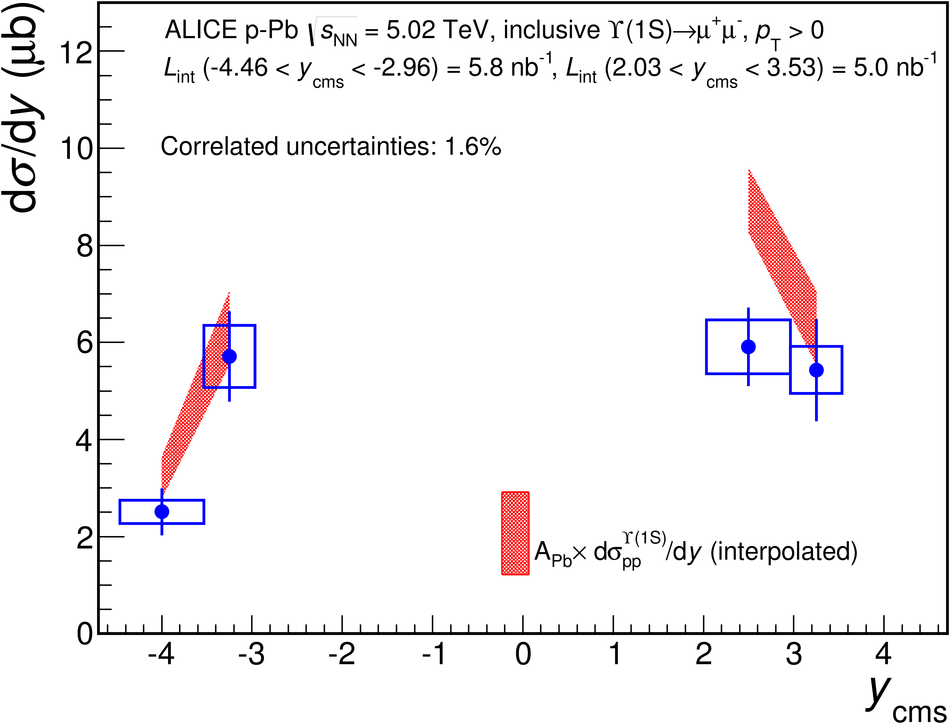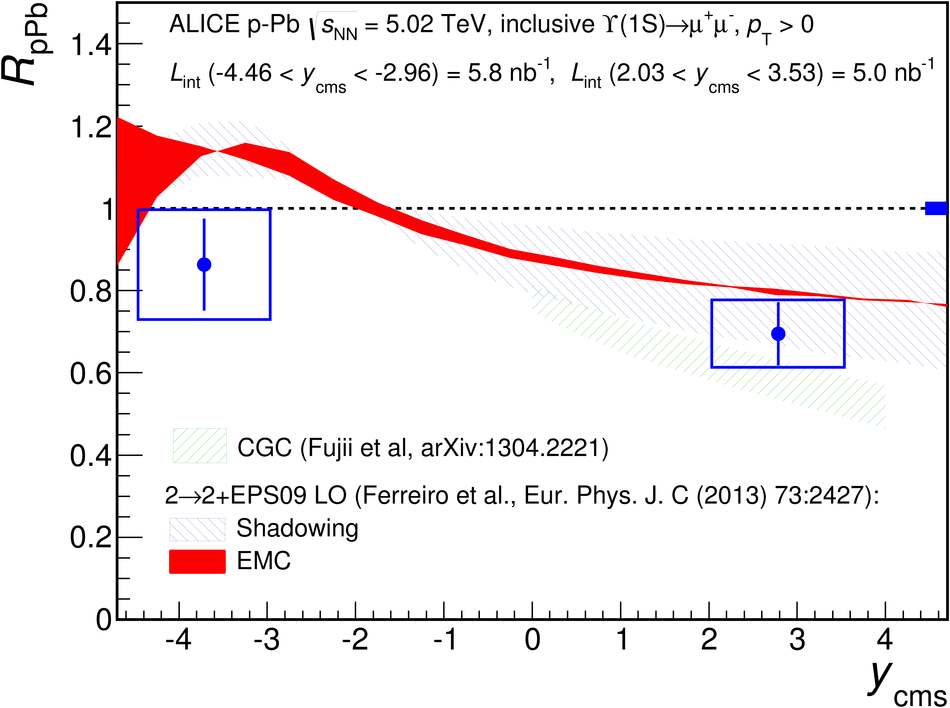We report on the production of inclusive $\Upsilon$(1S) and $\Upsilon$(2S) in p-Pb collisions at $\sqrt{s_{\rm NN}}=5.02$ TeV at the LHC. The measurement is performed with the ALICE detector at backward ($-4.46< y_{{\rm cms}}<-2.96$) and forward ($2.03< y_{{\rm cms}}<3.53$) rapidity down to zero transverse momentum. The production cross sections of the $\Upsilon$(1S) and $\Upsilon$(2S) are presented, as well as the nuclear modification factor and the ratio of the forward to backward yields of $\Upsilon$(1S). A suppression of the inclusive $\Upsilon$(1S) yield in p-Pb collisions with respect to the yield from pp collisions scaled by the number of binary nucleon-nucleon collisions is observed at forward rapidity but not at backward rapidity. The results are compared to theoretical model calculations including nuclear shadowing or partonic energy loss effects.
Phys. Lett. B 740 (2015) 105-117
HEP Data
e-Print: arXiv:1410.2234 | PDF | inSPIRE
CERN-PH-EP-2014-196








